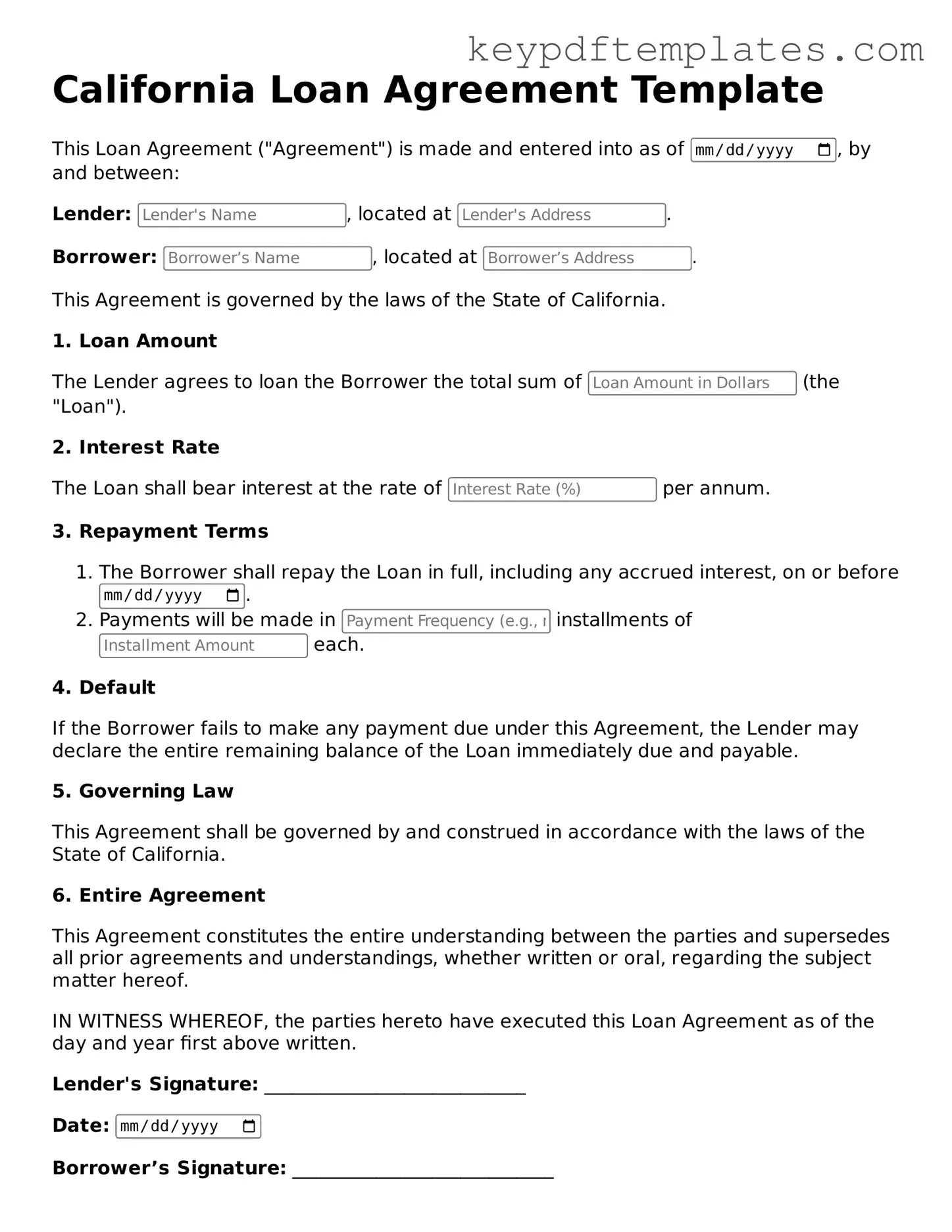Legal Loan Agreement Document for the State of California
The California Loan Agreement form is a legal document that outlines the terms and conditions of a loan between a lender and a borrower. This form serves to protect both parties by clearly defining the amount borrowed, repayment schedule, interest rates, and other essential details. Understanding this agreement is crucial for anyone involved in a lending transaction in California.
Modify Document Online
